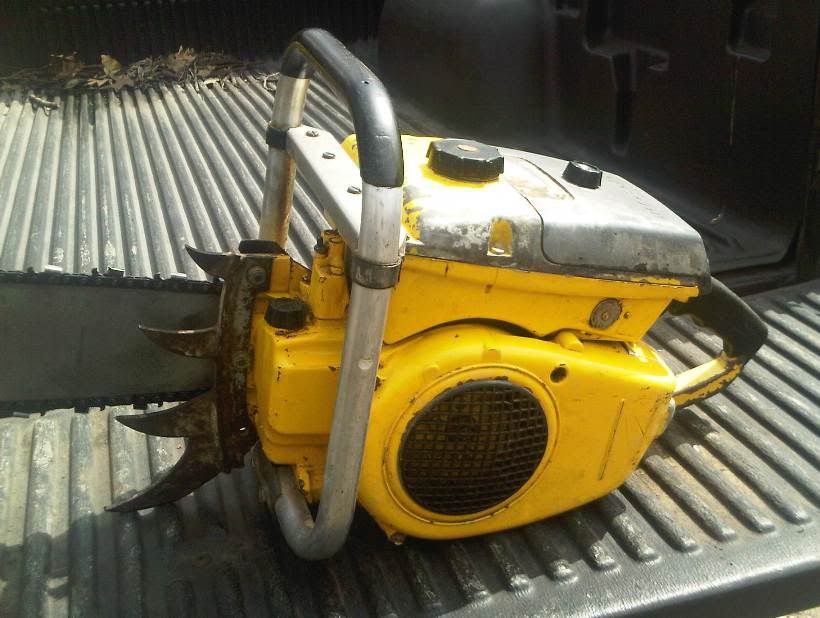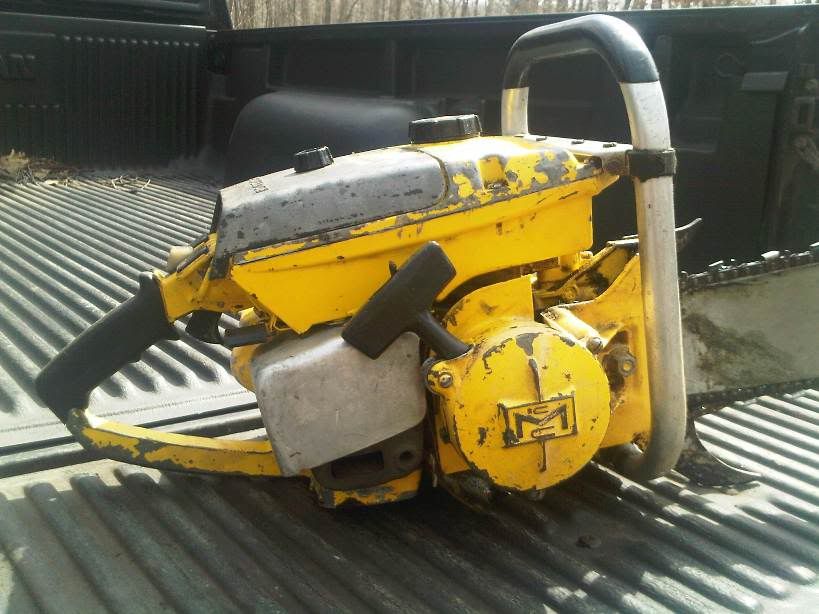You are starting to irritate me.:msp_biggrin:
Nice score, Been wanting one myself.
Lee
You've cornered the 797 market, and I only have 3 550s.:bang:
Chris B.

You are starting to irritate me.:msp_biggrin:
Nice score, Been wanting one myself.
Lee
You've cornered the 797 market, and I only have 3 550s.:bang:
Chris B.


Maybe a west coast/east coast thing. The 790,795,797's were extremely popular with the fallers out here.









Some models tended to flood when hot, not everytime, but often enough. Most likely a hot fuel tank vent problem, I have seen fuel lines piss over the edge from the pressure. ... the PM850 had no vices.

I broke down and bought a NAPA small engine compression tester today. It pained me to pay twice as much for it as their longer hose versions. But it sure peaks a lot quicker.
Anyway I checked the 125s today as part of my decision on the next move. Cold - one was 164# and the other was 138#. In comparision I checked two of my PM800s cold - both were 162# and my PM700 cold - 152#.
With the thought of building a good work saw, do I need to consider new rings for either 125?
I may check my other 125 tonight after I catch my breath.
Thanks for your input. Ron
The one with 164 is great, The one with 138 isn't that bad,
Might just need a set of rings or possibly some run time.
What doe's it look like throught the exhaust port?
Lee
Ron, I sent you a PM
Lee